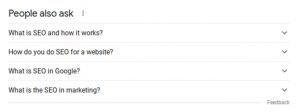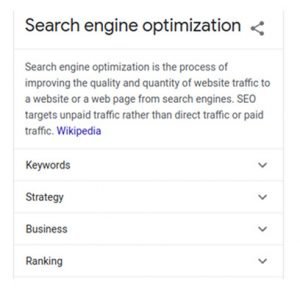
An Inside Look: Marketing Playbook
Sharing pages from your marketing playbook isn’t without risk. If you give away too much information then prospective clients may feel they’re now educated enough to handle their marketing by themselves, and suddenly your competitors are copying your winning strategies. At the same time, it’s hard to solidify your credibility in the field without demonstrating some level of competency, especially if you’re a younger entity like a startup.
Except younger entities actually stand to gain more when they do share their strategies, ideas, and stories and success as well as failure. Why is that? Simple- they have significantly less to lose.
Not only do the big names, heavy hitters, and industry giants become very protective of their formula for success, they become increasingly risk-averse. Why try something different when you have already found a system that works?
Newcomers will, understandably, start out by following the example set by the older, more successful brands. Newcomers are also the ones who thrive on experimentation, deviating from the tried-and-true, and creating new trends which determine the future of the industry. When younger entities share their strategies, ideas, and stories they inspire other small businesses to do the same – suddenly industry is abuzz with excitement and endless chatter about new possibilities.
Gold Lion Technologies was born out of a need for those very same strategies. It was our dissatisfaction with traditional ad agencies that inspired us to become the results based growth marketing company that we are now. And we know we aren’t the only company who has experienced those frustrations with traditional agencies, which is why we decided to share what it means to be results based and growth-oriented.
Let’s start with brand awareness.
Brand Awareness
You aren’t going to last long as a company if no one knows who you are or what you do. Brand awareness is the solution to both of those issues. It is made possible by executing a powerful content strategy in tangent with a powerful advertising strategy. The content used to enhance your brand highlights your uniqueness, and the ads are what make it memorable. Together the two are like peanut butter and jelly, making your brand desirable.
‘Content’ is a very vague, open-ended, and nebulous word, so we have broken down our content strategy even further to best utilize everything that content marketing has to offer. Optimized content is going to appeal to the algorithms as much as it does the people in your target audience. Man and machine must be in agreement that your brand is something worth considering.
When we say algorithms we are of course talking about SEO. There is much more to SEO than just keywords though, and that common misconception is part of why many do not see the utility in it. After all, the entire point of SEO is for people to find you, right? There’s more than one way to be found, which is why we don’t limit ourselves within the scope of SERP (Search Engine Results Page) placement alone.
Think about everything that comes up when you do a Google search. At the very top are the clearly marked paid ads, something which some internet users are vary of. The mentality here is that anyone can pay for ad placement, so it says more about your budget than quality of content. These ads can scare people off, so relying on paid ads alone isn’t enough. But what’s beneath that?
People also ask
A whole host of questions come up and clicking on one not only shows you a snippet from a website with information pertinent to that question, but more questions are generated too. Type in ‘What is SEO’ and one of the questions generated is ‘What is SEO and how it works?’.

Click on it, and ‘How can I learn SEO?’ appears in the new results.

Keep clicking and you will see questions about SEO tools, the importance of SEO, and how to find the right agency to help you optimize your site using SEO. With each click more and more questions are added, meaning more and more links are provided. A site that isn’t even on the first Search Engine Results Page (SERP) could appear here.
Look to the far right and there is a snippet from Wikipedia’s page on SEO. Beneath it are suggestions for related, more specific subjects with dropdown menus that bring up other websites with similar snippets of information.

All of this is on the first Search Engine Results Page (SERP). This is why we do not focus on placements alone, they’re not the be-all and end-all by any means. Paid ads, organic ads, snippets, and directory listings can play a role in the SEO strategy we develop for our prospects based on what makes the most sense for scaling the growth of their company.
There’s more on the Search Engine Results Page (SERP) though. Beneath those snippets are suggested other forms of content. SEO podcasts with 40+ results, SEO books with 35+ results, and similar topics that people search for. This brings us to the second part of our content strategy, appealing to people who are searching. Appealing to the people is less about ‘this is what we can do for you’ and more about ‘this is who we are’. It’s a formal introduction conducted through branded content like podcasts, social media, thought leadership articles, and video content.
Of course, none of this content is going to be remotely effective without efficient advertising. Our advertising strategies are more concerned with reaching the target audience than being seen by as many eyes as possible. Those are the people that we want to be seen and remembered by.
Ads serve a different purpose depending on who they are trying to reach, and the messaging must be tailored to ‘speak their language’. Different costs are associated with them as a result. New or lesser-known products and services have little presence on the market so the cost for advertising them is much higher. Rather than push those ads as much as possible, instead we start with promoting brand awareness and use that revenue to drive ads for anything new. Ads for known and popular products and services on the other hand have lower costs and a more predictable budget.
Converting Traffic
Much of our conversion strategies are informed by trends in consumer behavior, preferences, and expectations. We know that not all buyers are not going to follow the same linear sales process. Consumers like having options, which is exactly what we provide them with. Too many can be overwhelming but it doesn’t necessarily lead to the hesitation that traditional agencies anticipated. Put yourself in the shoes of the buyer for a moment- if you are overwhelmed by options are you more inclined to pick something familiar, or give up entirely?
It’s safe to say that rather than causing hesitation, providing those options can help cultivate customer loyalty. We live in an age which not only allows for but encourages communication across a multitude of channels, each with their own advantages depending on user preference. Not everyone has the time to make a phone call so it’s easier to reach someone through text or email. When customers have similar options for communicating with a business they have an overall better experience. Convenience and flexibility are what lead to sales calls and booking meetings.
The older mentality was that if someone truly wanted to reach out to you they would find a way to make it happen. And while that’s not entirely untrue, that doesn’t mean they enjoy having to conform. The less friction in your conversion strategies, the better.
Customer Focus
The advent and rise of the internet gave birth to review and ranking sites, social media, and general word of mouth. When consumers have the ability to research a product or company before making a financial commitment, the company’s success no longer hinges on the quality of their products and services alone. Providing a good customer experience needs to be the highest priority.
Our emphasis on growth marketing is in part due to the connection between the customer experience and the growth of a company. Something that traditional companies seem to forget is that the customer’s experience begins at first contact, and it ends when they decide it ends, not when the transaction is concluded. Support provided post-sale, for example, is part of the customer experience. Having reliable and accessible customer support service is often a make-or-break when potential customers are deciding between two or more competitors.
Businesses grow when customer bases grow, and customer bases won’t grow when businesses fail to provide them with a good experience. We bring customer advocacy into our customized growth strategies, making a positive customer experience part of a business’ very foundation. This means that as businesses grow, they not only grow their customer base but increase customer retention as well.
Customers are, more often than not, telling companies exactly what it is they need to do in order to succeed. Their voices aren’t always heard, and this does more than hurt revenue- it hurts a company’s image as well. Customers should feel encouraged to share their genuine thoughts and feelings about a business, confident that their stories will be heard and taken into consideration, and empowered by initiating those conversations. We don’t just bring customer advocacy into our strategy sessions; we want customers to be their own advocates too.
Final Thoughts
We hope that in sharing our strategies we will inspire agencies of all sizes to come forward and do the same, and recreate the sense of community and collaboration we feel is lacking. It’s only when we focus on doing better for our clients rather than being better than each other that the industry as a whole will flourish.
That is the ultimate results based growth strategy.


